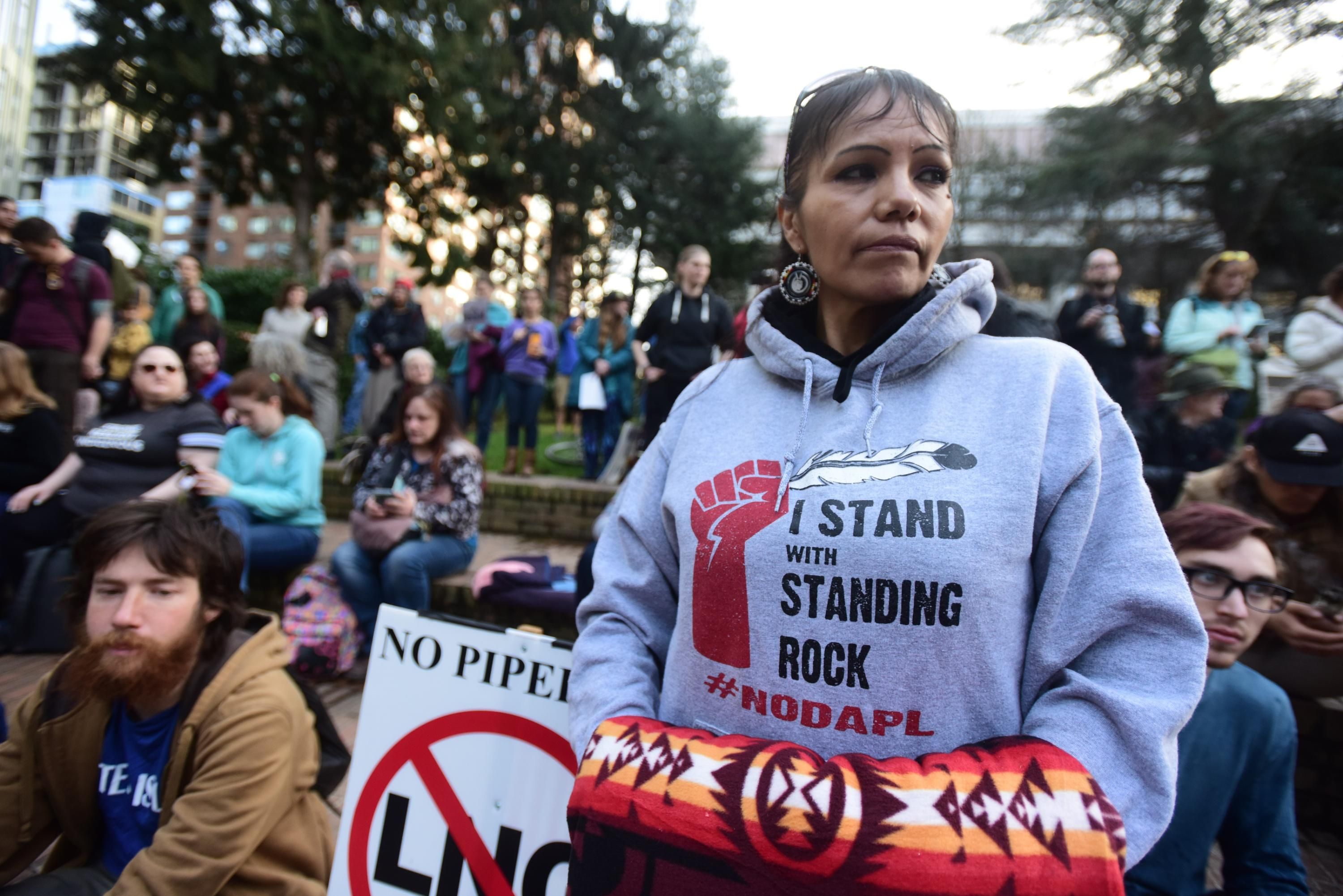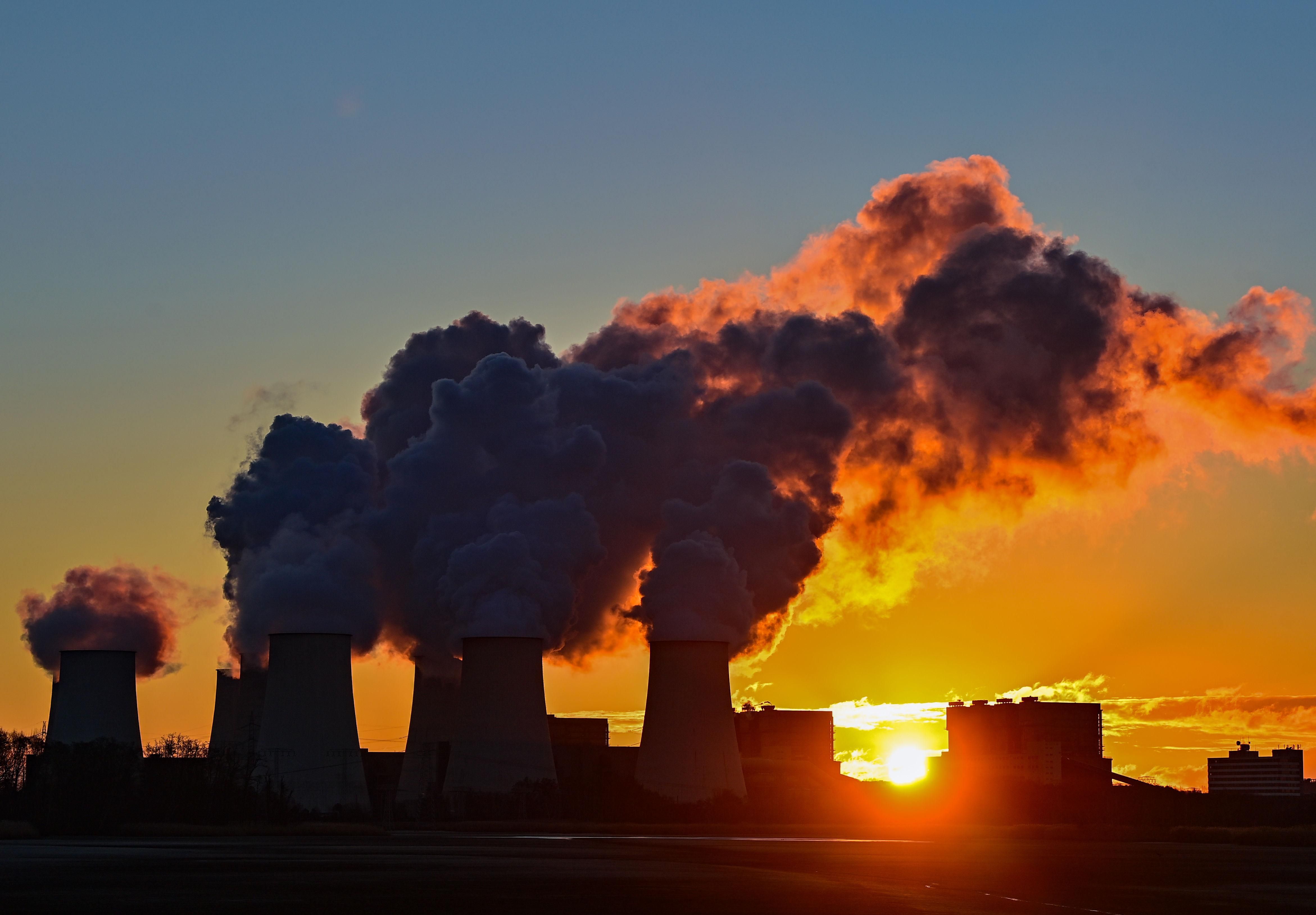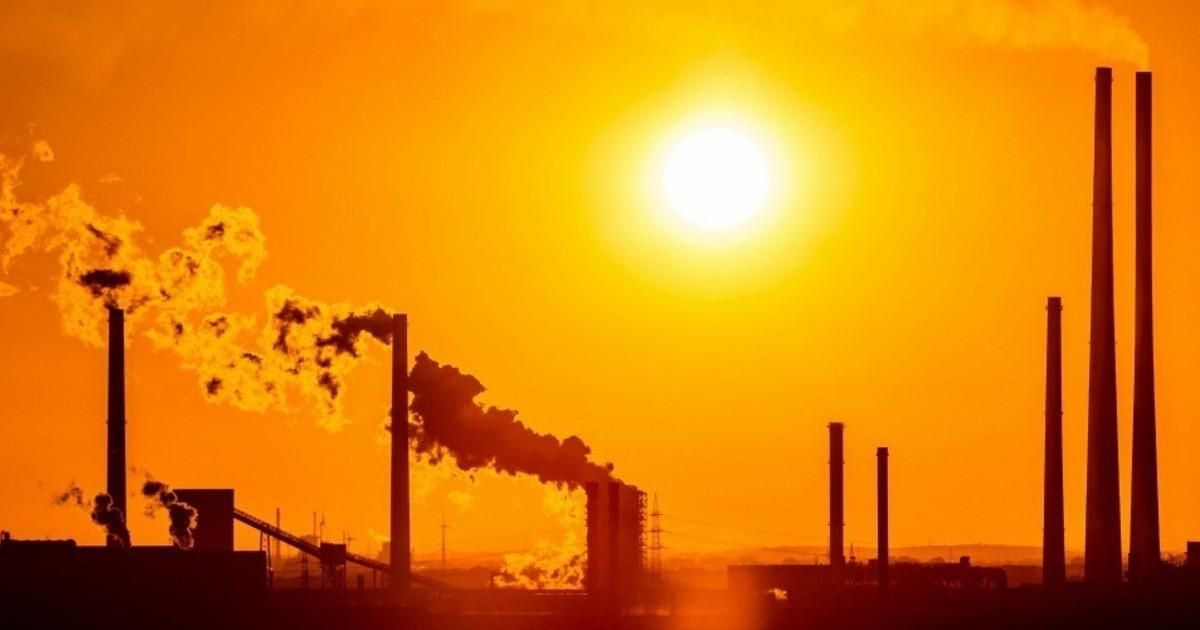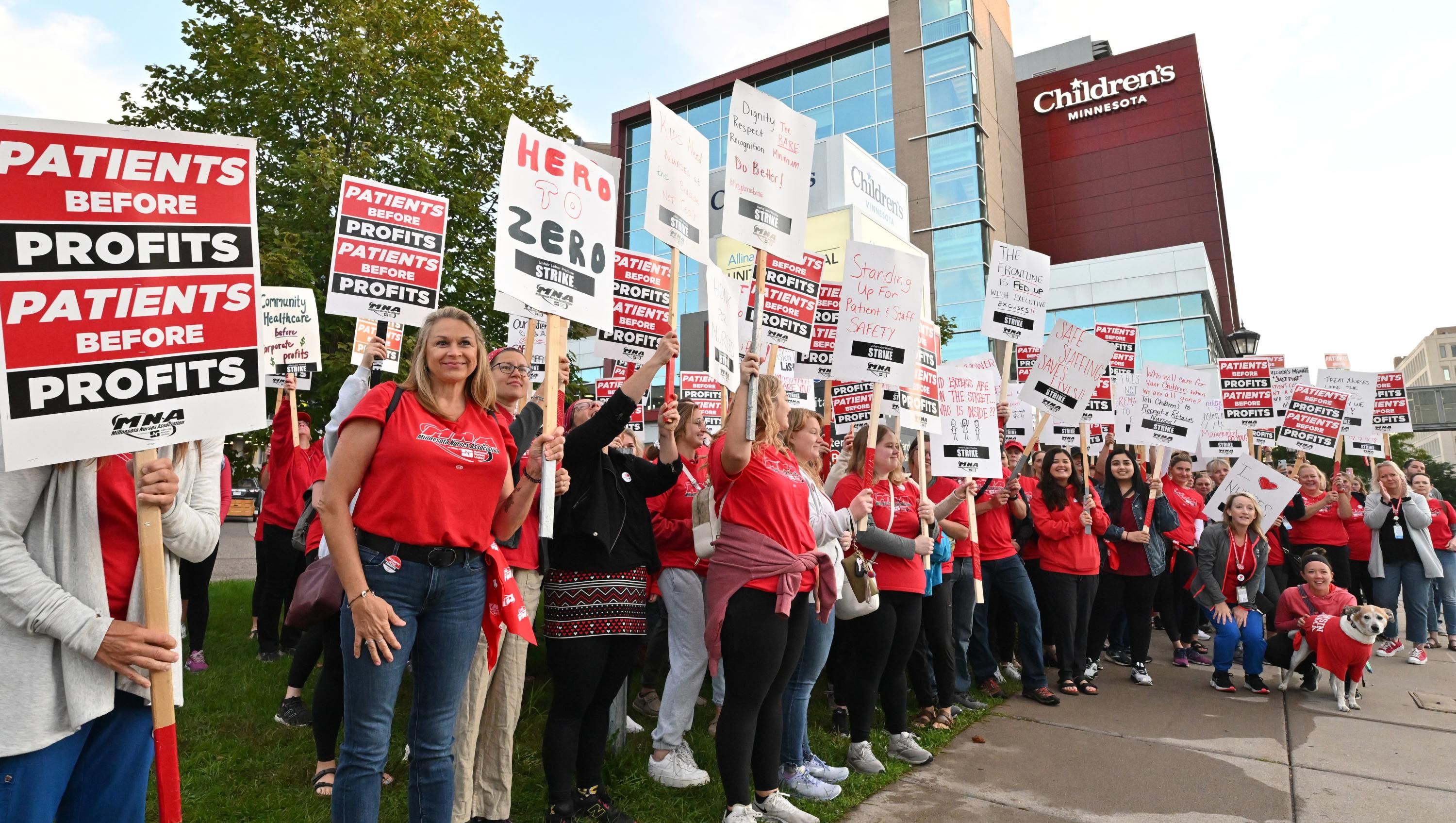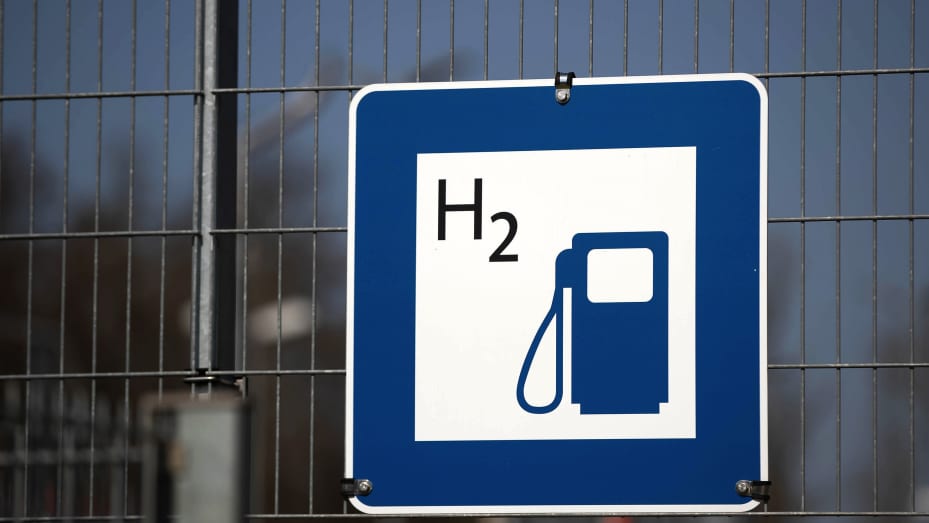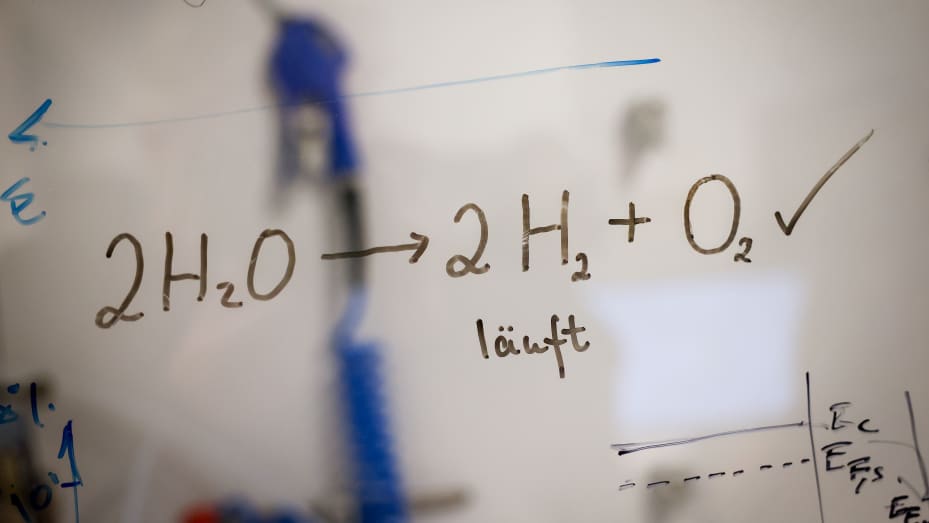"If this contract is presented to our members in its current form, it will not pass," said one union spokesperson.

BNSF workers arrive in Golden, Colorado on August 22, 2018.
KENNY STANCIL
As negotiations between rail carriers and unions trying to secure sick days and other basic benefits for tens of thousands of workers in the freight industry have stalled, White House officials are engaged in a last-ditch effort to prevent a nationwide railroad strike that could force much of the country's economy to grind to a halt as soon as the end of this week.
Many workers remain unsatisfied with the compromise proposed last month by President Joe Biden's appointed arbitrators, saying that it ignores their demands for more humane workplace policies and isn't enough to keep them from going on strike.
As the Washington Post reported Monday, citing three unnamed sources familiar with the matter:
Biden administration officials have started preparing for a potential shutdown and have warned that a strike could seriously damage the U.S. economy, while also warning it could hurt Democrats in the upcoming midterm elections, two of the people said. Labor Secretary Marty Walsh was part of meetings led by the White House National Economic Council last week, and President Biden is also personally tracking the matter, the two people said. Transportation Secretary Pete Buttigieg is also involved in trying to broker the impasse.
Walsh has postponed travel to Ireland to remain in talks.
"Our members are being terminated for getting sick or for attending routine medical visits as we crawl our way out of a worldwide pandemic."
"The parties continue to negotiate, and last night Secretary Walsh again engaged to push the parties to reach a resolution that averts any shutdown of our rail system," a Labor Department spokesperson said Monday. "All parties need to stay at the table, bargain in good faith to resolve outstanding issues, and come to an agreement."
If labor and management are not able to agree on a new contract by midnight on Friday, workers can strike. An unnamed spokesperson from one of the two rail unions still opposed to the White House proposal told CNBC on Monday that "if this contract is presented to our members in its current form, it will not pass."
"The workers are angry," said the spokesperson. "They want movement on attendance policies and [to] not be afraid to take a sick day or vacation day without the fear of termination. There will be no ratification unless this is addressed."
Should it materialize, the first national rail shutdown since the early 1990s would freeze an estimated 30% of the country's freight and most of its passenger and commuter rail services. The Transportation Department has estimated that the U.S. economy could lose up to $2 billion per day as a result.
"The last thing the [White House wants] right now is a major strike in a key sector like this," said Dean Baker of the Center for Economic and Policy Research. "I think Biden is going to be pushing really hard to get a deal. He'll presumably push on the employer side but I'm sure he'll push the union side as well... though there's a question of how hard he'll be willing to push the workers."
Railroads are currently enjoying record profits after decades of deregulation, consolidation, and "just-in-time" operations transformed the industry into what Sarah Miller, executive director of the American Economic Liberties Project, calls "another monopolized cash cow for Wall Street." Rather than improve pay and job conditions, owners have continued to squeeze workers and jeopardize public safety by cutting staff and increasing hours. Meanwhile, investors have been rewarded with stock buybacks and dividend bumps.
"The railroad has brought its labor woes on itself," one unnamed source with knowledge of the negotiations told CNBC. "They have made steep staffing cuts to appease shareholders and improve their bottom line. Workers are burned out. You have heard from the railroads they are hiring but they are not retaining talent because of the point system where you are on call for 12 hours a day and you have to be an hour or less away from your job. They are being held hostage."
The American Prospect's Ryan Cooper opined on social media that a "situation like this really calls for the government to step in and force management to make concessions."
As Labor Notes reported recently, the Presidential Emergency Board (PEB)—a three-person panel established by Biden earlier this summer in a bid to resolve heated negotiations between rail carriers and union officials—has "recommended 22% raises over the course of the five-year contract (dating back to 2020), which would be the highest wage increases rail unions have seen in decades. But they are offset by increases in healthcare costs—and come in the midst of high inflation."
"The PEB also refused to touch almost any of the unions' demands on work rules and conditions, either denying them outright or suggesting that the unions return to the slow negotiation and arbitration process they have already languished in since November 2019," the outlet noted. "Unions have been demanding a sick leave policy—rail workers have no sick days—and the PEB refused them. The PEB also refused to take a position on the strict attendance policies have infuriated many rail workers."
Since they were first issued on August 16, the PEB's non-binding recommendations have caused a previously united bargaining coalition representing 115,000 workers to splinter, with some rail union leaders seeking to turn the White House's proposal into a deal before a 30-day "cooling off" period expires.
As of Monday, 10 out of 12 unions have reached tentative agreements with railroad operators, up from five last week. But the two largest—the International Association of Sheet Metal, Air, Rail, and Transportation Workers–Transportation Division (SMART-TD) and the Brotherhood of Locomotive Engineers and Trainmen (BLET)—representing some 57,000 engineers and conductors are still not on board with the PEB's recommendations.
"We must make improvements to the working conditions that have been on the bargaining table since negotiations began," SMART-TD president Jeremy Ferguson and BLET president Dennis Pierce said Sunday in a joint statement.
"Penalizing engineers and conductors for getting sick or going to a doctor's visit with termination must be stopped as part of this contract settlement," said Ferguson and Pierce. "Let us repeat that, our members are being terminated for getting sick or for attending routine medical visits as we crawl our way out of [a] worldwide pandemic."
"No working-class American should be treated with this level of harassment in the workplace for simply becoming ill or going to a routine medical visit," they continued. "Sadly, the Presidential Emergency Board recommendation got it wrong on this issue. As we have said from the day that they were implemented, these policies are destroying the lives of our members, who are the backbone of the railroad industry."
"The railroads are using shippers, consumers, and the supply chain of our nation as pawns in an effort to get our unions to cave into their contract demands."
The freight industry has already begun preparing for a strike. As reported by The Associated Press, railroads announced late Friday that they planned to curtail "shipments of hazardous materials and other chemicals on Monday to ensure carloads of those dangerous products won't be stranded along the tracks if the trains stop moving."
According to Ferguson and Pierce, "This completely unnecessary attack on rail shippers by these highly profitable Class I railroads is no more than corporate extortion."
"Our unions remain at the bargaining table and have given the rail carriers a proposal that we would be willing to submit to our members for ratification, but it is the rail carriers that refuse to reach an acceptable agreement," said the pair. "They cannot legally lock out our members until the end of the cooling-off period. Instead, they are locking out their customers beginning on Monday and further harming the supply chain in an effort to provoke congressional action."
"The railroads are using shippers, consumers, and the supply chain of our nation as pawns in an effort to get our unions to cave into their contract demands," the duo added. "Our unions will not cave into these scare tactics, and Congress must not cave into what can only be described as corporate terrorism."
As Bloomberg reported over the weekend: "Pressure is building from industry groups and Republicans alike for Congress to intervene in the dispute... Lawmakers have the authority to extend the deadline beyond 12:01 am ET on September 16 or impose a contract on the two sides, preventing workers from striking for a better deal."
Lawmakers from both major parties, Jacobin noted recently, have invoked the Railway Labor Act several times to undermine the right to strike, "often ramming settlements down the throats of striking workers."
Ferguson and Pierce pointed out that "self-appointed titans of industry complain constantly about government regulation and interference—except now when it comes to breaking the backs of their employees."
"It's time for the federal government to tell the CEOs who are running the nation's railroads into the ground that enough is enough," they added. "Congress should stay out of the rail dispute and tell the railroads to do what other business leaders do—sit down and bargain a contract that your employees will accept."
Our work is licensed under Creative Commons (CC BY-NC-ND 3.0). Feel free to republish and share widely.
Ben Werschkul
·Washington Correspondent
Mon, September 12, 2022
There could be a major blow to the U.S. economy coming down the line: Freight railroads are preparing for possible strikes as a years-long labor dispute sits at an impasse ahead of a key Friday night deadline.
A strike would not only add to the nation's supply chain woes, but throw a monkey wrench into President Biden's plan to tout the nation's economic progress as midterm elections approach.
On one side are freight companies like Union Pacific (UNP), CSX (CSX), and BNSF Railway, owned by Warren Buffett's Berkshire Hathaway (BRK-A). On the other side are labor unions representing around 140,000 workers who are pushing for improvements in wages, working conditions, and time off.
And in the middle sits the Biden Administration. Labor Secretary Marty Walsh is rearranging his schedule to tend to the talks—and Treasury Secretary Janet Yellen is warning that failure would mean a “damaging supply shock to the economy.”
“The White House is closely monitoring the negotiations,” Yellen said Sunday during an interview on CNN while figures across the administration reportedly engage in a series of emergency meetings to head off the confrontation.
President Biden meanwhile is said to be monitoring the situation closely. He has long positioned himself as defender of unions, but is facing strong incentives this week to avoid a strike at all costs. A spokesperson for the Department of Labor told Yahoo Finance that a “shutdown of our freight rail system is an unacceptable outcome for our economy and the American people, and all parties must work to avoid that.”
President Joe Biden speaks to reporters at Joint Base Andrews
As of Monday two key holdouts - the Brotherhood of Locomotive Engineers and Trainmen and SMART-TD - didn't sound optimistic. In a joint statement, the unions said they are not close to an agreement while accusing the companies of “what can only be described as corporate terrorism.”
A recent report from the Association of American Railroads found that a stoppage could cost the U.S. economy $2 billion per day and result in widespread supply chain snarls potentially, shutting down 30% of the country’s freight capacity and also halt most passenger and commuter rail services.
The White House’s role
Talks have reached the point where some railroads are now securing shipments of hazardous and sensitive materials to make sure that no such cargo is left on an unattended train on Friday night.
At spokesperson for BNSF Railway told Yahoo Finance that securing the material needs to happen now because "while we have made significant progress with several of the unions, we must have every union under an agreement."
Back in July, Biden appointed a Presidential Emergency Board to “make sure America’s freight rail system continues to run without disruption.” Then, in mid-August the Board released their recommendations outlining ideas that included annual lump-sum payments, healthcare adjustments, and changes to work rules.
In a statement at the time, the Association of American Railroads which represents the industry said the recommendations would "provide a useful basis to reach a resolution.”
A Union Pacific rail car is seen parked at a train yard in Seattle in 2017.
But progress has been slow. Because of government rules, even after a mandatory 30-day “cooling off period,” strikes or lockouts are possible. That clock runs out at 12:01 am ET on Friday.
A spokesperson for the Department of Labor told Yahoo Finance that Secretary Walsh - who often touts his time as a union official - is “engaged to push the parties to reach a resolution.” The two holdout unions say that the key remaining issue are policies that, they say, penalize engineers and conductors for getting sick. They want stronger protections than what the Biden administration has proposed saying “sadly, the Presidential Emergency Board recommendation got it wrong on this issue.”
Nine other smaller unions have reportedly accepted tentative deals built about the emergency board recommendations. But the two holdout unions represent approximately half of the unionized workers involved in freight rail making their assent crucial.
Possible intervention from Congress
Policymakers do have some options when it comes to further action if the deadline is breached.
A continued impasse could open the door not only to strike, but also to Congressional intervention. The Congressional Research Service notes that there are a range of options for both executive and legislative action.
A key option would be legislation from Capitol Hill that could prohibit a strike or require the two sides to submit to another emergency board, in effect of delaying a strike. Lawmakers could also simply force all parties to accept a board’s recommendations.
Trains are lined up in a residential neighborhoods in Bay St. Louis, Mississippi on May 27, 2022. (Emily Kask for The Washington Post via Getty Images)
These types of disputes are governed by the Railway Labor Act which deems that direct intervention from Washington is warranted when the dispute threatens substantially to interrupt interstate commerce. But report also notes that the law is vague on exactly how such a threat is determined.
Groups representing interests like agriculture and trucking are already urging Congress to intervene with lawmakers - many of whom are just returning to Washington after the summer recess.
Meanwhile, the two remaining holdout unions remain wary. “Congress," they said Sunday, "should stay out of the rail dispute and tell the railroads to do what other business leaders do — sit down and bargain a contract that your employees will accept.”
Ben Werschkul is a Washington correspondent for Yahoo Finance. Dani Romero contributed to this report.
Brian Sozzi
·Anchor, Editor-at-Large
Mon, September 12, 2022
A potential railroad strike in the U.S. shouldn't be viewed as a black swan event, according to Goldman Sachs chief economist Jan Hatzius, but it could still have an impact on the economy.
"I don't think it's a black swan," Hatzius told Yahoo Finance Live at the Goldman Sachs Communacopia + Technology Conference on Monday (video above). "I think it's an indication, along with other indications of more labor strife and maybe more tensions, that labor still has a very significant amount of market power relative to the last several decades. The labor market is extremely tight. Employers have to concede bigger wage increases and better working conditions, and strikes are sometimes the consequence of that."
More than 90,000 workers at the country's freight railroads, including Union Pacific, BNSF, CSX, and Norfolk Southern, could go on strike should the railroads fail to reach an agreement with unions by Friday, Sept. 16. Workers are demanding higher wages and better overall treatment, especially around scheduling and time off.
A BNSF rail terminal worker monitors the departure of a freight train,
If a railroad strike occurs, 30% of the country's freight could come to a screeching halt, the Federal Railroad Administration estimated. That could amount to an economic hit to the tune of $2 billion a day.
Supply chain pressures have begun to ease from the worst of the pandemic, though that could change if there is a stoppage. Any strike could cause inflation — particularly in food prices — to push higher again at a time when households are already struggling to make ends meet.
But Goldman's Hatzius played down the impact of a railroad strike on food prices.
"I don't think it's going to have a major impact on food prices, certainly beyond the very near term," Hatzius said.
Analysts at Bank of America upgraded shares of the three largest publicly-traded railroad operators on Monday, despite the threat of a labor strike that could paralyze the industry later this week.
Ken Hoexter and his team at Bank of America Global Research upgraded shares of Canadian National (CNI), Canadian Pacific (CP), and Union Pacific (UNP) to Buy from Neutral in a note to clients on Monday, citing improving volume and labor trends.
"We recognize we are raising ratings days before Friday's deadline for the rails to agree [to new labor deals]," Hoexter wrote. "We would view any stoppage as a buying opportunity, as we would expect Congress to mandate back to work terms."
Shares of all three companies rose on Monday amid a broader rally for the U.S. equity market.
Hoexter notes rail carload volumes have trended higher of late, rising for 10 straight weeks after having declined for 37 of the prior 43 weeks. Carload volumes are still down 1.4% over last year and off 4% when compared to 2019, but so far in Q3 volume is up 1.4% against last year.
Increased hiring at the railroads has, in part, boosted recent performance, with Hoexter writing: "Rail volumes year-to-date have been constrained by a lack of capacity as shortages in Train, Engine, & Yard (TE&Y) staff limited the carriers' service."
A surge in hiring during the last several months has seen headcount at the Class 1 rails — which include the three companies BofA upgraded, as well as BNSF, Amtrak, CSX, Norfolk Southern, and Kansas City Southern (which is being acquired by Canadian Pacific) — rise to nearly 81,000 during the quarter, up 2.9% from last year.
More than 90,000 rail workers from 13 unions around the country have threatened to strike Friday if the unions that represent them can't reach an agreement with the National Railway Labor Conference, which represents the rail companies. Leaders of 11 of the 13 unions have reached a tentative deal but two of the biggest unions representing rail workers are still holding out.
A strike could impact one-third of cargo in the United States and would cost the American economy $2 billion a day, according to Association of American Railroads.
"Failure to act could idle more than 7,000 trains daily and trigger retail product shortages, widespread manufacturing shutdowns, job losses and disruptions to hundreds of thousands of passenger rail customers," AAR President and CEO Ian Jefferies wrote in a statement.
The White House said over the weekend it is "closely monitoring the negotiations."
Some railroads have made plans to reduce services in preparation for a potential strike.
Union Pacific Railroad announced late last week the company, "will begin to secure hazardous and other security-sensitive materials on our property for the safety of our customers, employees and communities we serve. In addition, we will embargo new shipments of hazardous commodities until those shipments can safely arrive at their destination. This is a proactive measure we are taking ahead of any potential work stoppages due to an impasse in labor negotiations."
If there is no contract this week, Congress could intervene by imposing a settlement on both sides or order a new cooling-off period.
Ultimately, more hiring and the likely resolution of labor disputes will improve service for the railroads, which is the most important factor, long-term, for these companies' stocks.
"Service performance has been a driver of rail stocks, more so than rising rates given the rails ability to sustain price above inflation," Hoexter wrote.
"While the pull back of fuel and higher labor costs will impact near term results, improvement in service should allow rails to continue relative outperformance. Rails outperformed the S&P 500 in 20 of the past 22 years."
Shares of all three railroads have outperformed the S&P 500 so far this year.
